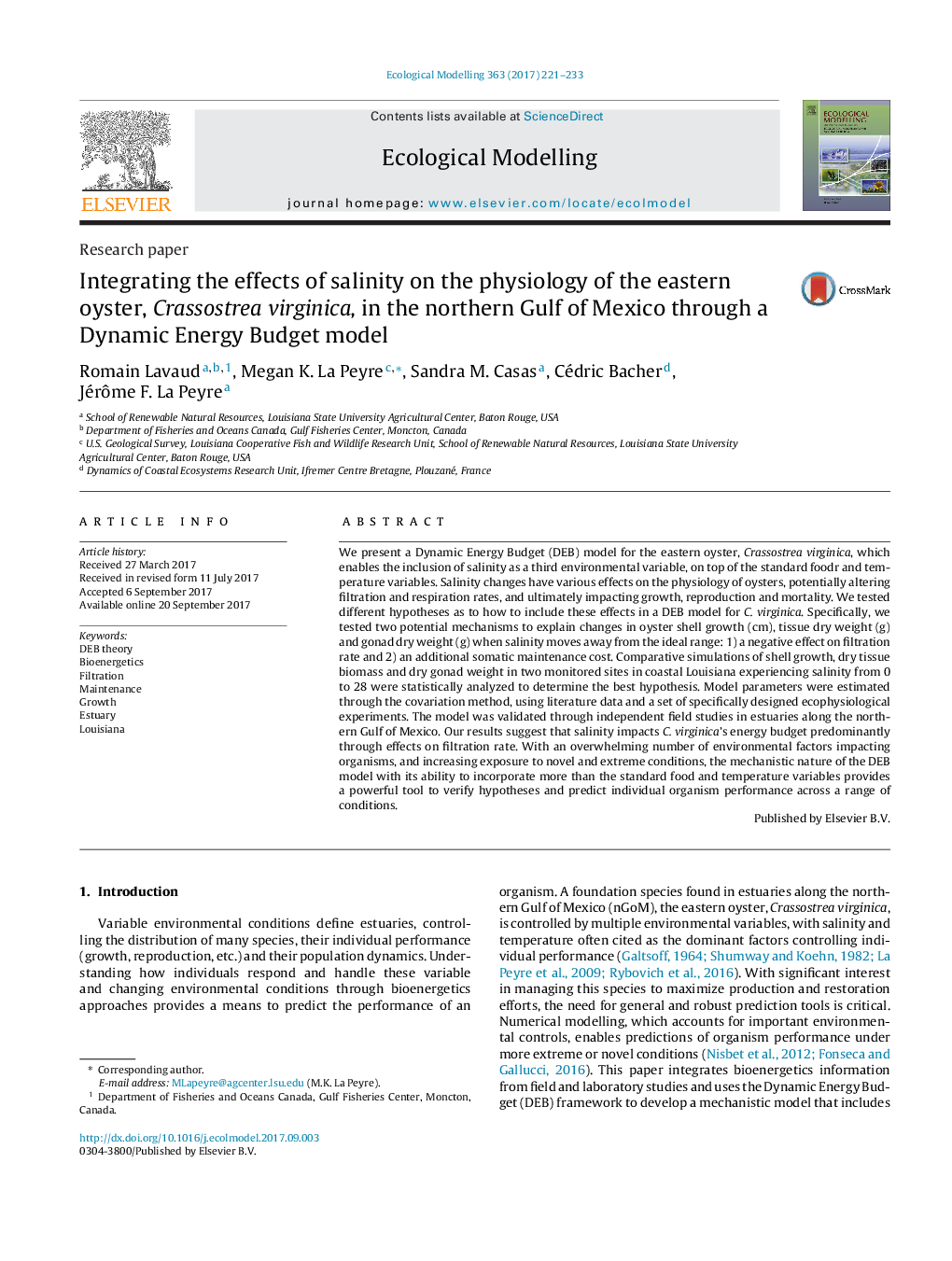| کد مقاله | کد نشریه | سال انتشار | مقاله انگلیسی | نسخه تمام متن |
|---|---|---|---|---|
| 5742025 | 1617384 | 2017 | 13 صفحه PDF | دانلود رایگان |

- We developed a Dynamic Energy Budget model for the oyster Crassostrea virginica.
- The DEB model was extended to include salinity as a third environmental variable.
- We tested 2 hypotheses to account for the effect of salinity on oysters physiology.
- Salinity affects C. virginica physiology through filtration rather than maintenance.
- The model was validated against independent data from the northern Gulf of Mexico.
We present a Dynamic Energy Budget (DEB) model for the eastern oyster, Crassostrea virginica, which enables the inclusion of salinity as a third environmental variable, on top of the standard foodr and temperature variables. Salinity changes have various effects on the physiology of oysters, potentially altering filtration and respiration rates, and ultimately impacting growth, reproduction and mortality. We tested different hypotheses as to how to include these effects in a DEB model for C. virginica. Specifically, we tested two potential mechanisms to explain changes in oyster shell growth (cm), tissue dry weight (g) and gonad dry weight (g) when salinity moves away from the ideal range: 1) a negative effect on filtration rate and 2) an additional somatic maintenance cost. Comparative simulations of shell growth, dry tissue biomass and dry gonad weight in two monitored sites in coastal Louisiana experiencing salinity from 0 to 28 were statistically analyzed to determine the best hypothesis. Model parameters were estimated through the covariation method, using literature data and a set of specifically designed ecophysiological experiments. The model was validated through independent field studies in estuaries along the northern Gulf of Mexico. Our results suggest that salinity impacts C. virginica's energy budget predominantly through effects on filtration rate. With an overwhelming number of environmental factors impacting organisms, and increasing exposure to novel and extreme conditions, the mechanistic nature of the DEB model with its ability to incorporate more than the standard food and temperature variables provides a powerful tool to verify hypotheses and predict individual organism performance across a range of conditions.
Journal: Ecological Modelling - Volume 363, 10 November 2017, Pages 221-233